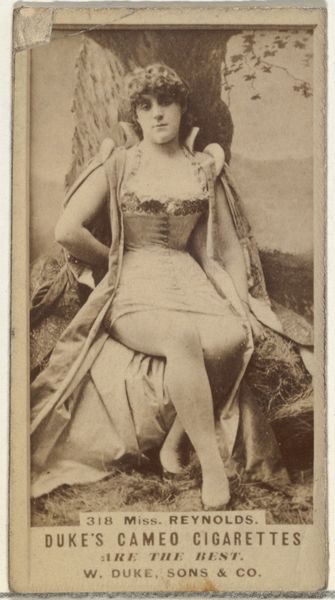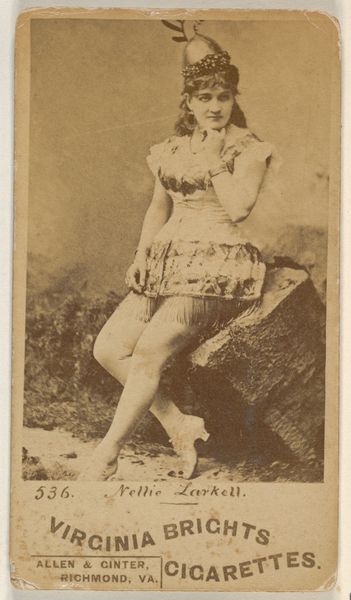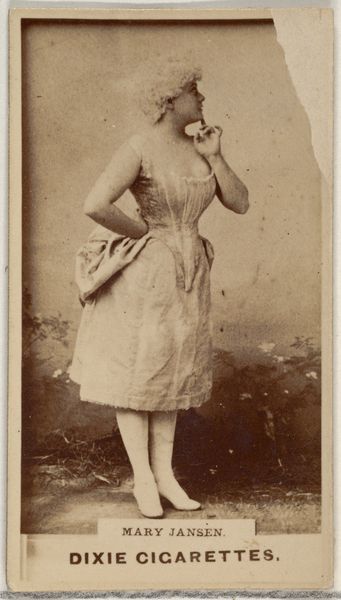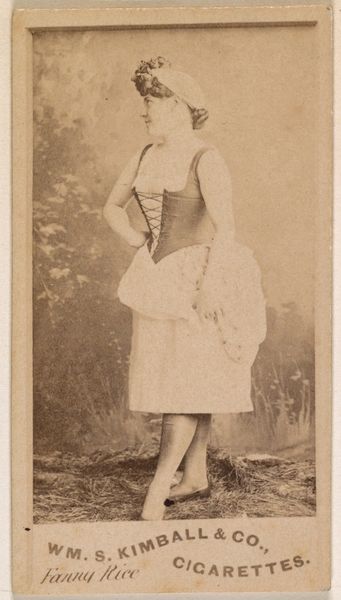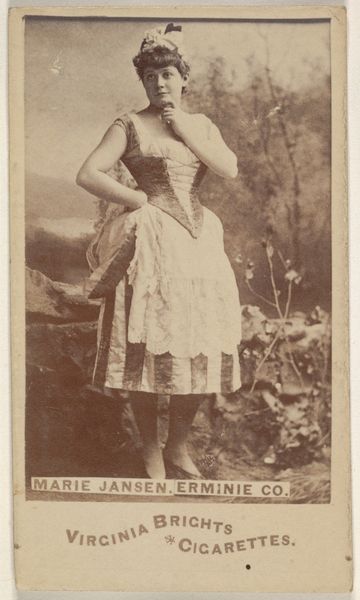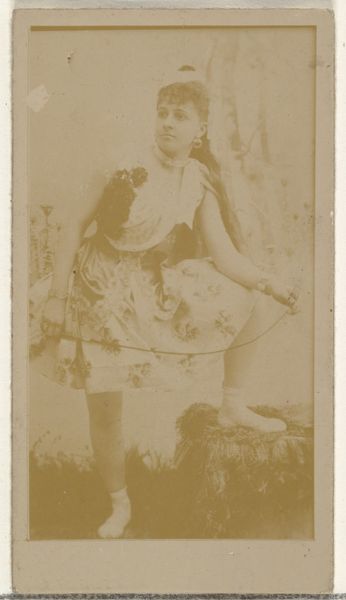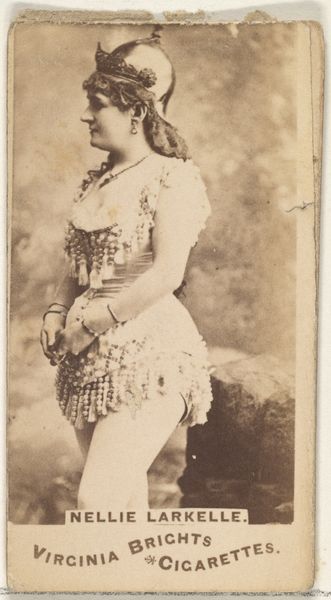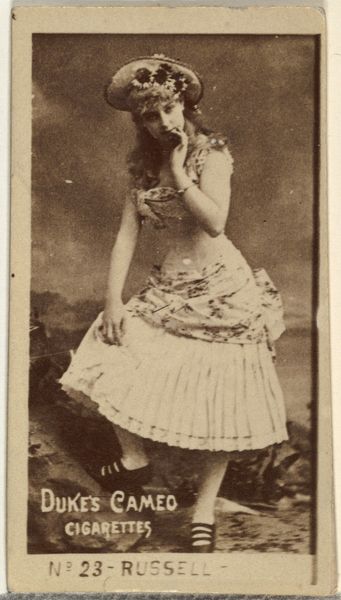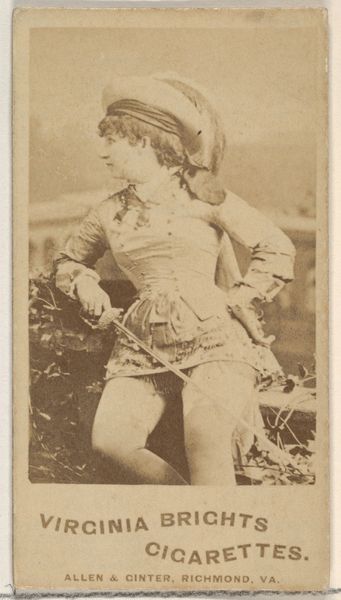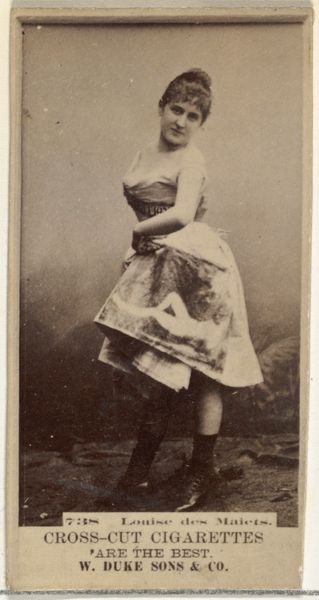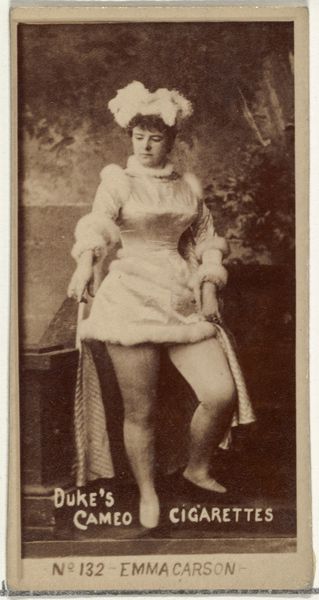
Card 506, Adele Gallia, from the Actors and Actresses series (N45, Type 1) for Virginia Brights Cigarettes 1885 - 1891
0:00
0:00
drawing, print, photography
#
portrait
#
drawing
# print
#
photography
#
history-painting
Dimensions: Sheet: 2 3/4 x 1 3/8 in. (7 x 3.5 cm)
Copyright: Public Domain
Editor: This is Card 506, Adele Gallia, from the Actors and Actresses series, dating from between 1885 and 1891. It was produced by Allen & Ginter for Virginia Brights Cigarettes. It's a sepia-toned print. What immediately strikes me is the sort of objectification going on - how would you approach discussing this image? Curator: This image provides a critical lens through which to view the intersection of commerce, gender, and performance in the late 19th century. These cards, distributed with cigarettes, served as promotional tools, commodifying images of actresses like Adele Gallia. It is essential to look at the historical context; this was a period of burgeoning consumer culture where images of women were often used to sell products. Considering feminist theory, how does the male gaze operate here? Editor: The “male gaze?" How so? Curator: Consider her pose, costume, and the very act of circulation with tobacco products, largely consumed by men at the time. Aren't these choices imbued with particular assumptions about gender and spectatorship? Also, think about class: were these accessible for everyone to collect, or primarily upper and middle class people who bought cigarettes regularly? How might that affect its reception? Editor: I didn't consider that aspect! It definitely adds another layer. Seeing the actress tied to consumerism raises questions about labor too. Curator: Precisely! Who profited from these images, and how were actresses like Adele Gallia compensated, both financially and socially? This tiny card opens a broader discussion about the historical power dynamics that are still present today. Editor: It's a lot more complex than I initially thought. Thank you, this has really opened my eyes! Curator: My pleasure! I am just happy to explore these crucial intersections between art history and social justice.
Comments
No comments
Be the first to comment and join the conversation on the ultimate creative platform.
